
The Itaipu Dam is a hydroelectric dam on the Paraná River located on the border between Brazil and Paraguay. It is the third largest hydroelectric dam in the world, and holds the 45th largest reservoir in the world.
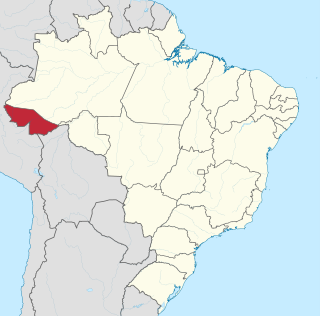
Acre ( ) is a state located in the west of the North Region of Brazil and the Amazonia Legal. Located in the westernmost part of the country, at a two-hour time difference from Brasília, Acre is bordered clockwise by the Brazilian states of Amazonas and Rondônia to the north and east, along with an international border with the Bolivian department of Pando to the southeast, and the Peruvian regions of Madre de Dios, Ucayali and Loreto to the south and west. Its capital and largest city is Rio Branco. Other important places include Cruzeiro do Sul, Sena Madureira, Tarauacá and Feijó. The state, which has 0.42% of the Brazilian population, generates 0.2% of the Brazilian GDP.

The Paraguayan War, also known as the War of the Triple Alliance, was a South American war that lasted from 1864 to 1870. It was fought between Paraguay and the Triple Alliance of Argentina, the Empire of Brazil, and Uruguay. It was the deadliest and bloodiest inter-state war in Latin American history. Paraguay sustained large casualties, but the approximate numbers are disputed. Paraguay was forced to cede disputed territory to Argentina and Brazil. The war began in late 1864, as a result of a conflict between Paraguay and Brazil caused by the Uruguayan War. Argentina and Uruguay entered the war against Paraguay in 1865, and it then became known as the "War of the Triple Alliance."

The Treaty of Madrid was an agreement concluded between Spain and Portugal on 13 January 1750. In an effort to end decades of conflict in the region of present-day Uruguay, the treaty established detailed territorial boundaries between Portuguese Brazil and the Spanish colonial territories to the south and west. Portugal also recognized Spain's claim to the Philippines while Spain acceded to the westward expansion of Brazil. The treaty included a mutual guarantee of support in case either state's American colonies were attacked by a third power.

The Manual on Uniform Traffic Control Devices for Streets and Highways is a document issued by the Federal Highway Administration (FHWA) of the United States Department of Transportation (USDOT) to specify the standards by which traffic signs, road surface markings, and signals are designed, installed, and used. In the United States, all traffic control devices must legally conform to these standards. The manual is used by state and local agencies as well as private construction firms to ensure that the traffic control devices they use conform to the national standard. While some state agencies have developed their own sets of standards, including their own MUTCDs, these must substantially conform to the federal MUTCD.

The Treaty of the Triple Alliance was a treaty that allied the Empire of Brazil, Argentina, and Uruguay against Paraguay. Signed in 1865, after the outbreak of the Paraguayan War, its articles prescribed the allies' actions both during and after the war. The war led to the near-annihilation of Paraguay.
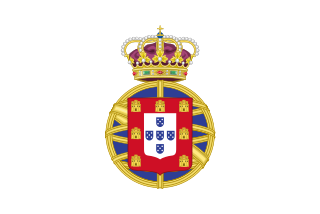
The United Kingdom of Portugal, Brazil and the Algarves was a pluricontinental monarchy formed by the elevation of the Portuguese colony named State of Brazil to the status of a kingdom and by the simultaneous union of that Kingdom of Brazil with the Kingdom of Portugal and the Kingdom of the Algarves, constituting a single state consisting of three kingdoms.

The Convention on Road Signs and Signals, commonly known as the Vienna Convention on Road Signs and Signals, is a multilateral treaty standardize the signing system for road traffic in use internationally.

Lenine, artist name of Osvaldo Lenine Macedo Pimentel, is a Brazilian singer-songwriter from Recife, Pernambuco. Between the years of 2002 and 2018, he has earned a total of seven Latin Grammy Awards,.
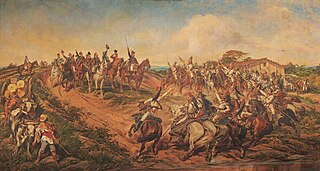
The independence of Brazil comprised a series of political and military events that led to the independence of the Kingdom of Brazil from the United Kingdom of Portugal, Brazil and the Algarves as the Brazilian Empire. It is celebrated on 7 September, the date when prince regent Pedro of Braganza declared the country's independence from the United Kingdom of Portugal, Brazil and the Algarves on the banks of the Ipiranga brook in 1822 on what became known as the Cry of Ipiranga. Formal recognition by Portugal came with the Treaty of Rio de Janeiro, signed in 1825.
Rodrigo Teixeira Pereira is a Brazilian former professional football striker.
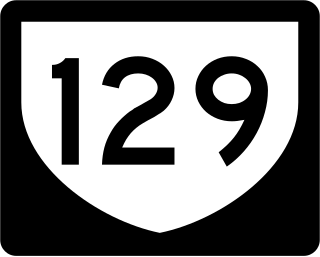
Puerto Rico Highway 129 (PR-129) is a north–south highway in North-Central Puerto Rico, connecting the town of Lares with Arecibo. It crosses the northern karst country of the island. When traveling from the northern coast of Puerto Rico, PR-129 can be used to reach the Arecibo Observatory and the Camuy River Caverns Park.
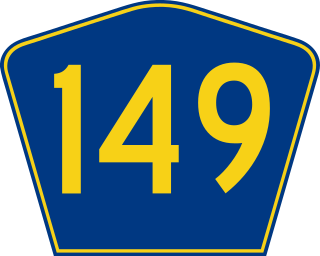
Puerto Rico Highway 149 (PR-149) is a secondary highway in Puerto Rico that connects the towns of Manatí in the north coast of Puerto Rico, from PR-22 to Juana Díaz in the south coast, ending at PR-1.

Puerto Rico Highway 143 (PR-143) is a secondary highway that connects the town of Adjuntas to the town of Barranquitas.

The Brazilian War of Independence, was waged between the newly independent Brazilian Empire and the United Kingdom of Portugal, Brazil and the Algarves, which had just undergone the Liberal Revolution of 1820. It lasted from February 1822, when the first skirmishes took place, to March 1824, with the surrender of the Portuguese garrison in Montevideo. The war was fought on land and sea and involved both regular forces and civilian militia. Land and naval battles took place in the territories of Bahia, Cisplatina and Rio de Janeiro provinces, the vice-kingdom of Grão-Pará, and in Maranhão and Pernambuco, which today are part of Ceará, Piauí and Rio Grande do Norte states.

The Acre War, known in Brazil as Acrean Revolution and in Spanish as Guerra del Acre was a border conflict between Bolivia and the First Brazilian Republic over the Acre Region, which was rich in rubber and gold deposits. The conflict had two phases between 1899 and 1903 and ended with an Acrean victory and the subsequent Treaty of Petrópolis, which ceded Acre to Brazil. The outcome also affected territories disputed with Peru.

Laerte Coutinho, known mainly as simply Laerte, is a Brazilian cartoonist and screenwriter, known for creating comic strips such as Piratas do Tietê.

Road signs in Chile are regulated in the Manual de Señalización de Tránsito, which is based on both the United States' MUTCD and the Vienna Convention on Road Signs and Signals, to which Chile is a signatory. Therefore, road signs are compliant with international standards. Chile uses yellow diamonds for warning signs in common with most of the rest of the Americas. Speed limit signs are a red circle with a white background and the limitation in black, and are in kilometres per hour. There are also some signs unique to Chile. Chile also currently uses a mixture of both types of mandatory signs: European-style signs with white symbols on a blue background and a white border, and signs with black symbols on a white background and a red border.

Events in the year 1845 in Brazil.

Road signs in Portugal are governed by the "Regulamento de Sinalização do Trânsito" of the Republic of Portugal.

















































































































